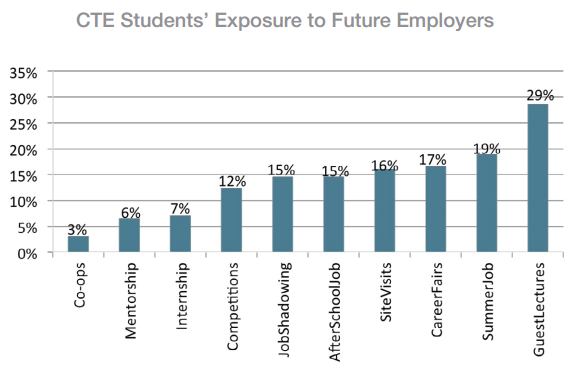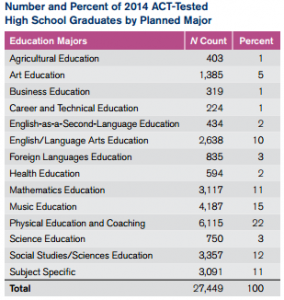 A lot has happened this season on Capitol Hill, particularly with regards to the implementation of the Workforce Innovation and Opportunity Act (WIOA), new CTE-related legislation and various announcements from the Obama Administration. As summer draws closer, we wanted to take a moment and re-cap all of the exciting activity going on in Washington D.C. as we look ahead to what the rest of the year has in store for the Career Technical Education (CTE) community. Below is Part II in a two part series of springtime legislative updates.Â
A lot has happened this season on Capitol Hill, particularly with regards to the implementation of the Workforce Innovation and Opportunity Act (WIOA), new CTE-related legislation and various announcements from the Obama Administration. As summer draws closer, we wanted to take a moment and re-cap all of the exciting activity going on in Washington D.C. as we look ahead to what the rest of the year has in store for the Career Technical Education (CTE) community. Below is Part II in a two part series of springtime legislative updates.Â
Implementing the Workforce Innovation and Opportunity Act
On April 16th, the U.S. Departments of Labor, Education and Health and Human Services (DOL, ED, HHS) formally published a long overdue series of Notices of Proposed Rulemaking (NPRM). These NPRM’s are a proposed set of rules developed by the Obama Administration that would govern the implementation of the Workforce Innovation and Opportunity Act (WIOA). They were released in five parts:
- Unified and combined plans, performance accountability and the one-stop system (DOL/ED)
- DOL-administered activities (DOL only)
- Title II adult education and family literacy activities (ED only)
- Miscellaneous program changes (ED only)
- State vocational rehabilitation services program, state-supported employment service programs and limitations on the use of subminimum wage (ED only)
The National Skills Coalition recently released a helpful summary and webinar overviewing the main elements of this proposal. Moreover, DOL recently released a Training and Employment Guidance Letter (TEGL) that outlines the governance-related activities that States must complete by July 1st of this year. As a reminder, all of WIOA’s required implementation dates can be found here.
While the five NPRM’s cover the full spectrum of WIOA implementation, the most relevant proposal for the CTE community is the first NPRM listed above, jointly developed and released by both DOL and ED. This NPRM seeks to provide additional guidance to states as they choose to pursue the unified or combined planning options available under WIOA, a clearer articulation of two of WIOA’s common performance metrics— “indicators of effectively serving employers†along with “measurable skills gainsâ€â€” and attempts to provide clarity regarding the sharing of infrastructures costs for WIOA’s One-Stop system of which postsecondary CTE is a required partner.
Published in the Federal Register on April 16th, the Obama Administration has opened up these NPRMs for public consumption and comment. Responses to the department are due no later than June 16, 2015 and can be submitted here by following the on-screen instructions.
NASDCTEc and its partners plan to provide formal comments on the issues outlined above in the coming weeks and will continue to monitor and engage with the federal rulemaking process as it continues throughout the rest of this year.
CTE Legislation Round-Up
In March Senators Tammy Baldwin (D-WI) and Tim Kaine (D-VA), co-chairs of the Senate CTE Caucus, introduced the Next Generation High Schools Act (NGHS), a bill that would create a $300 million competitive high school redesign program to increase the number of students who graduate college-and-career ready by connecting schools with comprehensive, evidence-based reform models similar to those found in CTE.
Specifically, the bill would support applied learning instructional approaches and rigorous CTE curriculum to overhaul high schools in an effort to boost graduation rates and increase student achievement. NASDCTEc supported the introduction of this bill and has fully endorsed the proposal. A press release on the legislation can be found here and more information is located here. In a recent op-ed article, Senator Baldwin reiterated her intent to introduce additional CTE-related legislation further on this year.
Last week Senators Rob Portman (R-OH) and Mark Warner (D-VA) introduced the Go to High School, Go to College Act which seeks to increase student access to postsecondary education. The bill would incentive early college and dual / concurrent enrollment models offered at the high school level by expanding federal Pell Grant program eligibility to qualifying students to pursue these opportunities.
A companion bill sponsored by Representatives Marcia Fudge (D-OH) and Chris Gibson (R-NY) has also been introduced in the House. NASDCTEc has fully supported and endorsed this legislation and applauds these lawmakers’ commitment to providing a quality postsecondary education to all students. More information on the bill can be found here and a press release from Senator Portman’s office is located here.
Updates from the Obama Administration
Last week, ED’s Office of Career, Technical, and Adult Education (OCTAE) released a fourth round of non-regulatory guidance for issues surrounding the implementation of the Carl D. Perkins Act (Perkins). Common questions regarding the law’s implementation and corresponding answers, along with the three previous versions of this Q&A, can be viewed on OCTAE’s newly renovated Perkins Collaborative Resource Network.
OCTAE has also recently released a summary report of the responses ED, DOL, and HHS received from last year’s request for information (RFI) on quality career pathway development and implementation. NASDCTEc, along with 140 other stakeholder groups, provided comment during this solicitation. View the full report here.
In March, the Obama Administration announced the launch of their “TechHire†initiative which will provide $100 million in competitive grant funding through DOL to create partnerships between employers, eligible training institutions, and local governments. Funded by DOL’s H1-B visa fees, the initiative seeks to invest in innovative, data-driven programs that provide participants specific occupational training. More information on available grants is expected later this year, but an overview of the effort can be found here.
Last week, U.S. Secretary of Commerce Penny Pritzker and the Aspen Institute announced the launch of “Communities that Work Partnershipâ€, a new joint effort that seeks to promote industry-led training and workforce development programs. Supported by a $500,000 grant from the U.S. Commerce Department’s (Commerce) Economic Development Administration, the announcement is part of Commerce’s ongoing “Skills for Business†initiative that is aimed at preparing workings for job opportunities in in-demand occupations and industry sectors. More information on the announcement, how to engage with this work, and relevant deadlines can be found here.
Sector partnerships are one of the new points of emphasis under WIOA. In an effort to support the creation and expansion of these partnerships, DOL’s Employment and Training Administration (ETA) has announced in a recent TEGL the availability of $150 million in grant funding for state agencies responsible for administering Title I programs and activities under WIOA. Funds may be used for the planning of individual sector strategies, related program services, and administration. More information is available from the National Skills Coalition’s blog.
Last week, the White House hosted its first-ever “Upskilling Summit†to bring together the employer and education communities. The event also marked the unveiling of a new report on how the Administration plans to promote a series of public-private partnerships aimed at supporting workers of all ages and background’s as they seek to secure high-skill, high-wage jobs. Read the report here.
Steve Voytek, Government Relations Manager



 The report finds that 2.9 million of the 6.6 million jobs added over the Recovery are “good jobs,†most of which require at least a bachelor’s degree. Consistent with many of the Center’s other reports, “Good Jobs Are Back” finds that individuals with a high school diploma or less as the most likely to suffer during and beyond the Recession and Recovery.
The report finds that 2.9 million of the 6.6 million jobs added over the Recovery are “good jobs,†most of which require at least a bachelor’s degree. Consistent with many of the Center’s other reports, “Good Jobs Are Back” finds that individuals with a high school diploma or less as the most likely to suffer during and beyond the Recession and Recovery.

